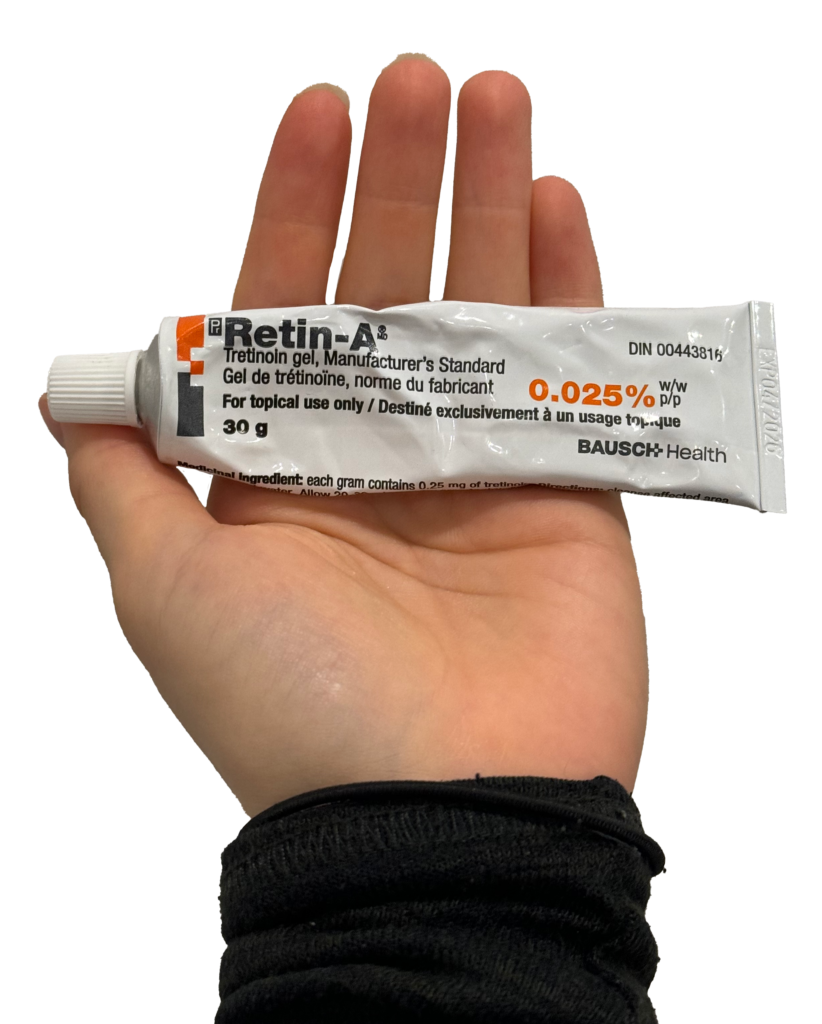
What is Tretinoin and How Does it Work?
Tretinoin is a medication prescribed for the treatment of acne. It is one of many retinoids that has gained popularity for its ability to clear facial acne and improve the look of wrinkles and fine lines. In this article you will learn the science behind retinoids like Tretinoin.
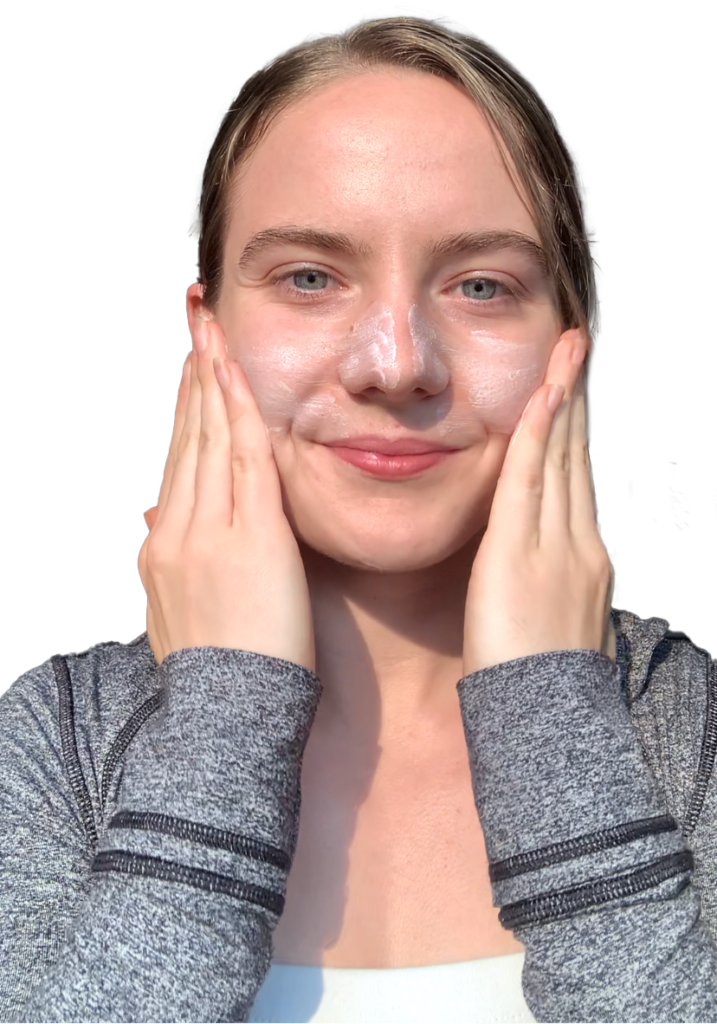
What is Tretinoin?
Tretinoin, also known as all-trans retinoic acid, is a medication used to treat acne. Tretinoin is part of a class of medications called retinoids.
Retinoids are a group of molecules derived from vitamin A. Examples of retinoids include retinaldehyde/retinal and retinoic acid. You may have also heard the term retinol which is just another name for Vitamin A.
Look at the chemical structure of Tretinoin and the chemical structure of Vitamin A. The only difference between the two molecules is that tretinoin has a carboxylic acid functional group where retinol has an alcohol group.
Summary:
Retinol = Vitamin A
Retinoid = Molecule that is derived from Vitamin A
Tretinoin = Type of retinoid
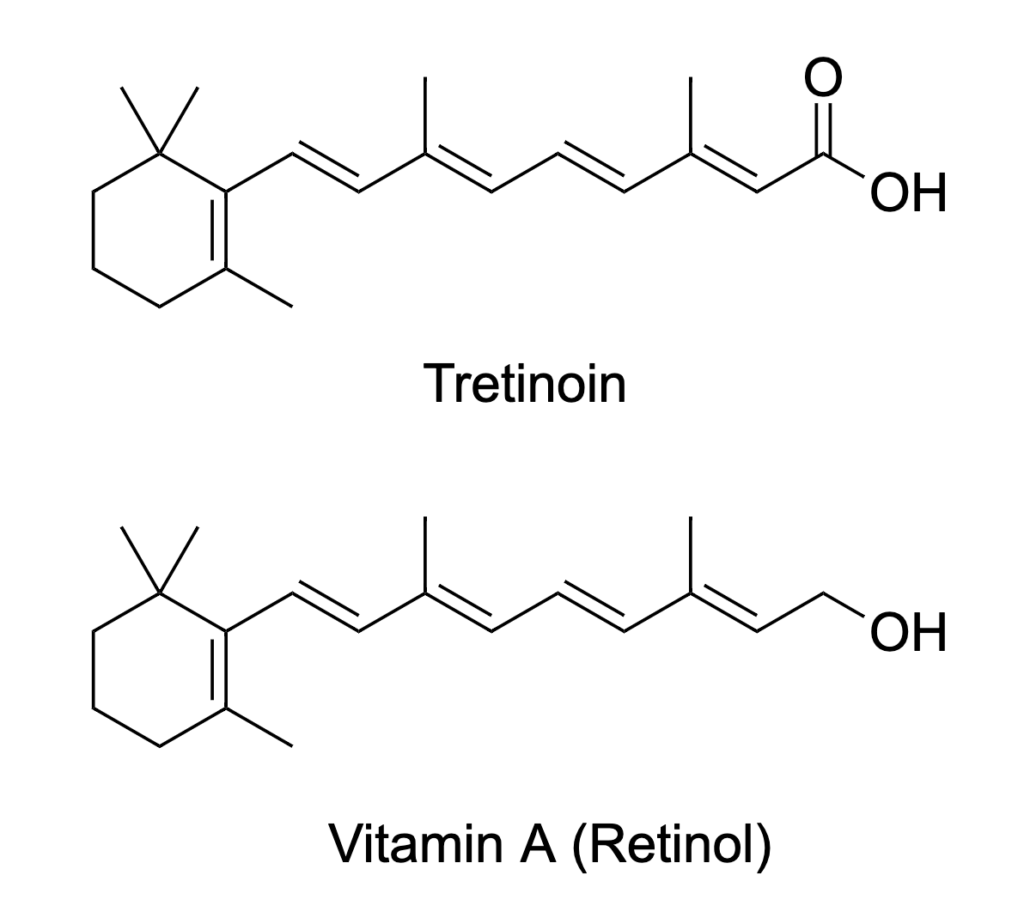
How does Tretinoin Work to Prevent Acne?
To understand how tretinoin works we have to start by asking the question, what causes acne?
Acne lesions arise from pilosebaceous units which consist of hair follicles and sebaceous glands (see the image to the right).
There are a few different mechanisms behind the development of acne:
- The abnormal shedding of skin cells (hyperkeratinization) which causes the sebaceous glands and follicles to get clogged.
- Androgens (sex hormones including testosterone) can drive the production of excess sebum. Sebum is an oil produced by the sebaceous gland which can mix with dead skin cells and cause blockages.
- Propionibacterium acnes (acne causing bacteria) can colonize and grow in the follicles.
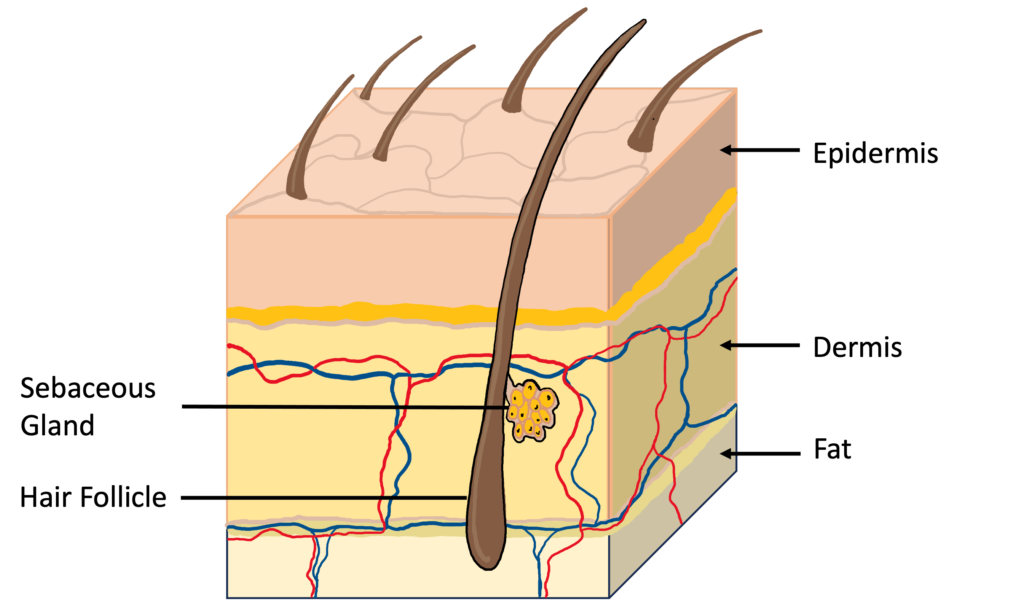
Pilosebaceous Unit
Now that we know the causes of acne we can understand how tretinoin works:
Retinoids like Tretinoin act to normalize skin cell shedding and increase cellular turnover (this is the process of producing new skin cells to replace old ones).
Specifically, Tretinoin accelerates the shedding of corneocytes (dead skin cells found at the top of the epidermis).
This helps prevent hair follicles and pores on the skin from getting clogged and forming microcomedones (the initial stage of pimples caused by obstructions).
Increased cellular turnover also leads to the expulsion of mature comedones (whiteheads and blackheads on the skin).
It is important to note that Tretinoin does NOT have an effect on acne causing bacteria. That is why some dermatologists will prescribe Tretinoin alongside an antibiotic such as clindamycin.
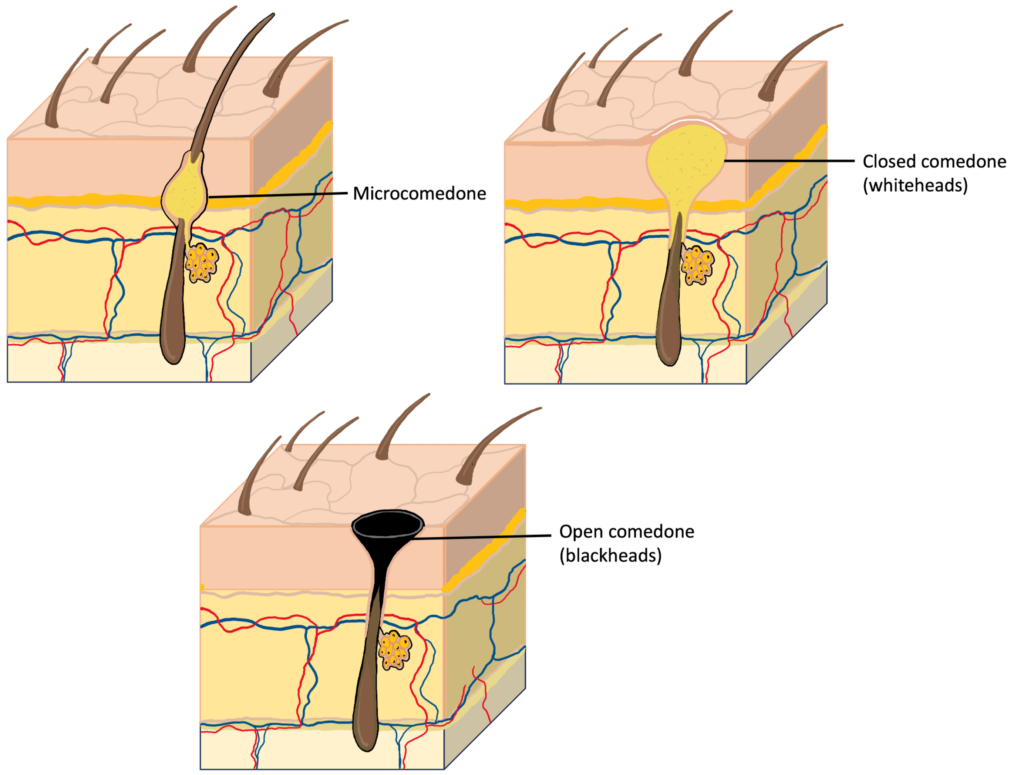
Acne Stages
TLDR: Tretinoin helps your skin shed dead skin cells and make new skin cells. This helps prevent follicles and pores on your skin from getting clogged and developing acne lesions.
What is happening on a cellular level when you use Tretinoin?
- First Tretinoin must enter the nucleus of the skin cells. To do this it binds to the cytosolic retinoic acid binding protein (CRABP).
2. CRABP transports the retinoic acid into the nucleus of the cell where it will bind to retinoic acid receptors (RARs).
3. This leads to the transcription of various genes that increase the shedding of corneocytes, increase cellular turnover, and decrease the formation of microcomedones.
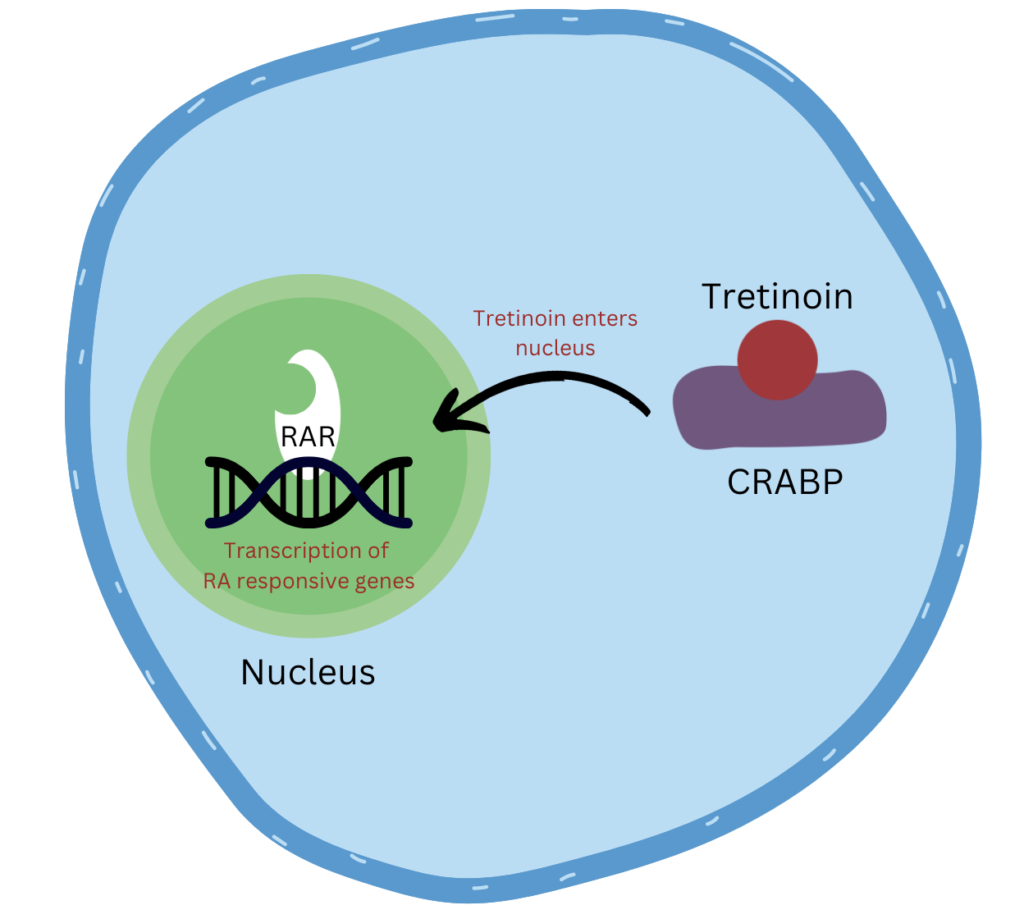
Why do you purge after starting Tretinoin?
If Tretinoin is supposed to help with acne, why do so many people online warn new Tretinoin users about “the purge”?
Purging, also called acne flaring, is when patients using acne medications like Tretinoin see new acne lesions emerge within the first few weeks of treatment.
A study on retinoid induced acne flaring found that 15% of the patients who were given Tretinoin saw an increase in acne flaring during the first 2 weeks of treatment. The researchers suggested that this was due to the underlying acne delaying the therapeutic activity.
In other words, your skin has to clear out the oil, debris, and dead skin cells that were already there before the benefits of Tretinoin can be observed. Check out this video by Dr. Mamina Turegano to hear what she has to say about the retinoid purge.
Why should you limit sun exposure while using Tretinoin?
Tretinoin causes the skins stratum corneum (outermost layer of the epidermis) to become thinner.
This is because of the increased shedding of corneocytes in the stratum corneum.
As the top layer of the skin gets thinner, it can become increasingly sensitive to damage from the ultraviolet rays in sunlight.
That is why dermatologists recommend Tretinoin be used before bed and patients should wear sunscreen throughout the day.
Tretinoin and Aging
The science of Tretinoin does not stop with acne. Tretinoin has also been found to improve signs of aging like wrinkles and fine lines.
This is because Tretinoin stimulates collagen formation and inhibits collagen breakdown.
Type I collagen is the most abundant protein in skin connective tissue. It provides structure, strength, and support to the skin.
However, ultraviolet light from the sun induces the degradation of collagen in the skin. Specifically, UV rays stimulate enzymes called matrix metalloproteinases (MMPs) which break down collagen in the skin.
Tretinoin inhibits MMPs which helps prevent the breakdown of collagen in photo-damaged skin.
Tretinoin also directly stimulates collagen formation. Tretinoin has been shown to increase collagen formation by 80% in the dermis layer of the skin when used for 1 year.
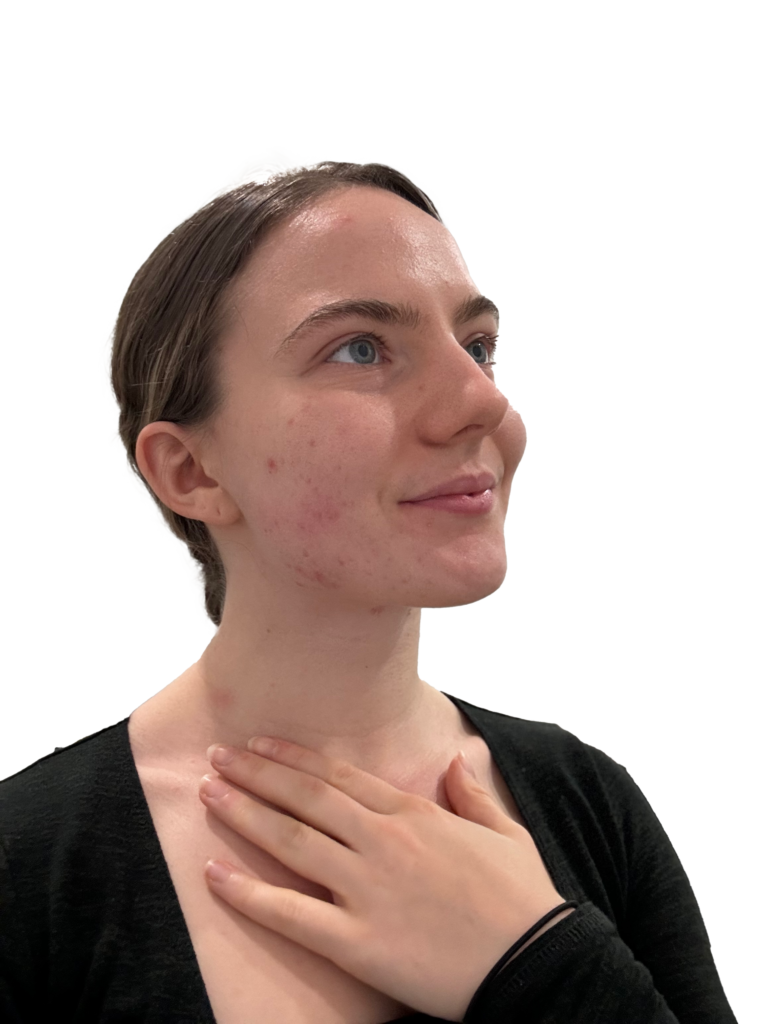
And that's the science behind retinoids like Tretinoin!
The skin is the largest organ in our body. It’s incredible how important our skin is for protection; it protects us from the sun, microorganisms, and chemicals. But like the rest of our organs our skin is not immune to the world we live in. Pores get clogged, bacteria colonize, and issues like acne arise. And thats where medications like Tretinoin and other retinoids come in. The skin is a retinoid responsive organ meaning it readily absorbs retinoids which can cause physiological changes and help in the treatment and prevention of acne.
References:
- Yoham AL, Casadesus D. Tretinoin. [Updated 2023 Mar 27]. In: StatPearls [Internet]. Treasure Island (FL): StatPearls Publishing; 2024 Jan-. Available from: https://www.ncbi.nlm.nih.gov/books/NBK557478/
- Motamedi M, Chehade A, Sanghera R, Grewal P. A Clinician’s Guide to Topical Retinoids. Journal of Cutaneous Medicine and Surgery. 2022;26(1):71-78. doi:10.1177/12034754211035091
- Russell JJ. Topical therapy for acne. Am Fam Physician. 2000 Jan 15;61(2):357-66. PMID: 10670502.
- Leyden J, Stein-Gold L, Weiss J. Why Topical Retinoids Are Mainstay of Therapy for Acne. Dermatol Ther (Heidelb). 2017 Sep;7(3):293-304. doi: 10.1007/s13555-017-0185-2. Epub 2017 Jun 5. PMID: 28585191; PMCID: PMC5574737.
- Thiboutot, D. M. (2000). The role of follicular hyperkeratinization in acne. Journal of Dermatological Treatment, 11(SUPPL. 2), 5-8. https://doi.org/10.1080/095466300750163645
- C.B. Boswell, Skincare Science: Update on Topical Retinoids, Aesthetic Surgery Journal, Volume 26, Issue 2, March 2006, Pages 233–239, https://doi.org/10.1016/j.asj.2006.02.003
- Advanced Dermatology and Skin Cancer Center. (2024). Common Types Of Acne. https://www.advancedderm.net/acne/
- American Skin Association. (2024). Acne. https://www.americanskin.org/resource/acne.php
- Feneran AN, Kaufman WS, Dabade TS, Feldman SR. Retinoid plus antimicrobial combination treatments for acne. Clin Cosmet Investig Dermatol. 2011;4:79-92. doi: 10.2147/CCID.S13873. Epub 2011 Jul 1. PMID: 21760743; PMCID: PMC3133504.
- Retinoid-Induced Flaring in Patients with Acne Vulgaris: Does It Really Exist?: A discussion of data from clinical studies with a gel formulation of clindamycin phosphate 1.2% and tretinoin 0.025%. J Clin Aesthet Dermatol. 2008 May;1(1):41-3. PMID: 21103310; PMCID: PMC2989803.
- Mukherjee S, Date A, Patravale V, Korting HC, Roeder A, Weindl G. Retinoids in the treatment of skin aging: an overview of clinical efficacy and safety. Clin Interv Aging. 2006;1(4):327-48. doi: 10.2147/ciia.2006.1.4.327. PMID: 18046911; PMCID: PMC2699641.
